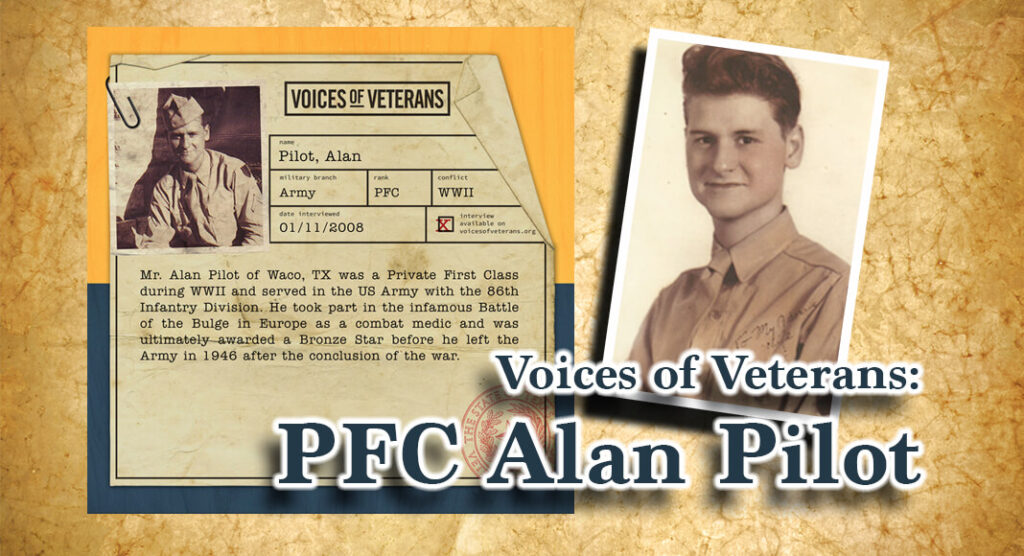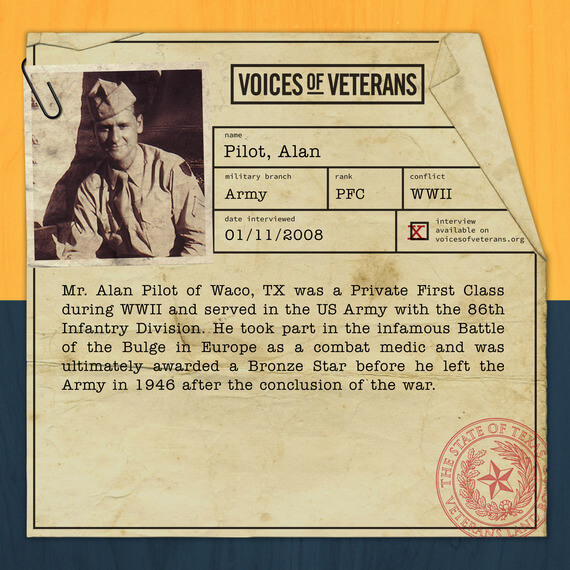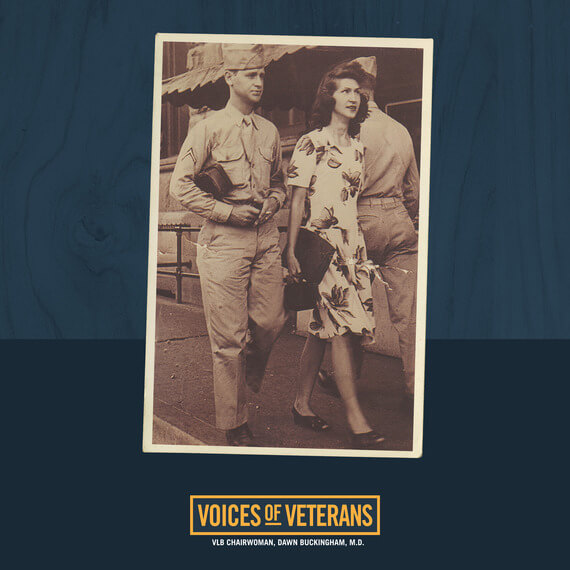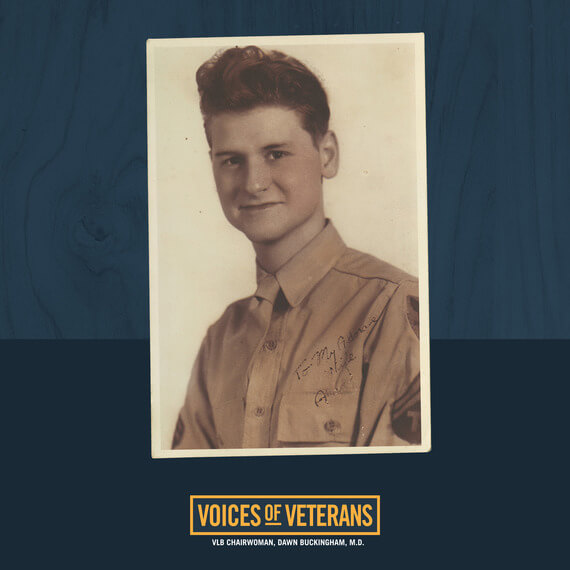
Texas Border Business
AUSTIN — Texas Land Commissioner and Veterans Land Board (VLB) Chairwoman Dawn Buckingham, M.D., is proud to introduce the next installment of the series highlighting the VLB’s Voices of Veterans oral history program. Today we highlight the service of PFC Alan Pilot who served in the U.S. Army during WWII.

Pilot was born in Baltimore in 1923 and is the son of an immigrant father who came to the United States to attend medical school. When asked about Pearl Harbor, Pilot said he remembers that day vividly.
“My closest buddy right out of high school joined the Marine Corps, and I was taking, he had just finished basic training, and I was taking him down to the train station in Baltimore City, when we heard it on the radio,” he said about December 7, 1941. “I was young and you know, and of course my buddy, he, he was gun-ho, but I still wouldn’t. I got out of high school, and I worked a year in order to make the money to go to school, but a lot of my friends did join early.”

Pilot said he attended the Directional Institute of Technology in Philadelphia for chemical engineering but quickly learned that the math courses required for completion were just too much for him.
“It was a good program, but it didn’t pan out. Uncle Sam, well, I tell you what, I was, I was almost flunking out anyway. I was not prepared to go into engineering coming from a county school, which, you know, they didn’t offer the courses to prepare me for, uh, for engineering,” he said.
Life changed for Pilot. He entered the Army, where he was trained as a medic, and was appointed to the 86th Infantry Division, which was formed in December 1942. Pilot said he was part of the first recruit class, entering in 1943, and was sent off to basic training.

“When I went in, they were making assignments, and they had, because of my eyes, they put a limit of service stamp on my papers because I was pretty nearsighted, and so when I got to where they were, got to Fort, I mean Camp Howse in Gainesville, Texas, the guy that’s making the assignment, this officer put you’re going to the medical detachment,” Pilot recalled. “I said I don’t want to go to medical. I want to go to an infantry unit. He, he says, ‘That’s a good spirit, son,’ he says, ‘but you’re going to the medics.'”
Pilot said his medical training was limited in scope and referenced being trained for one of two things: a company aid man or working in the battalion aid station.
“Our training was fairly basic,” he said. “We were basically taught to treat shock, stop hemorrhaging, and get their butts back to the aid station as soon as possible. That’s basically what, you know, we uh, we would administer morphine. I had these little morphine syringes that you’d give a guy to help combat the shock.”
Pilot took part in the tail end of The Battle of the Bulge, a German-led counter-offensive that was intended to cut through the Allied forces in a manner that would turn the tide of the war in Hitler’s favor.
“We didn’t get the brunt of The Bulge. We got the roar, and that was, there were 100,000 German elite troops bottled in that area, and our job was to split the pocket,” Pilot explained, acknowledging they had a quite a few casualties.
“The biggest thing that I remember, and it’s pretty indelible in my mind, is that the old Cologne cathedral was a, uh, forward observer point where, see, I was, I was with the E Company and H Company. Well, H has got the heavier weapons. They had the 80, 81-millimeter mortars, and so they had an observation post up the tip, at the top of the, of the Cologne cathedral, and I remember climbing up there. It was completely gutted inside and that most of Cologne was nothing. It was just completely destroyed by our artill-, I mean our Air Force, Air Corps then.”
Pilot said he saw many things as a trained medic, things he’d never forget. One he remembers vividly, a forward observer took a German .88 to the stomach.
“He caught it in the stomach, and all his intestines were laying out. I had to take the hugest bandages I could and push them back in,” Pilot explained about that day, adding he sprinkled sulfanilamide in the wound. This antibiotic drug was used to treat bacterial infections, including infected wounds in World War II. “Penicillin had not come into use as yet, and it wasn’t until later, so it was the sulfanilamide, and so I used that just pushed it all back, and then valium, of course got him, got him back to aid station, and I understand he lived. Yes, he lived.”
To listen to PFC Alan Pilot tell his story, click the button below:
Information Source: Texas General Land Office















